Underwater Photography Essentials and more...
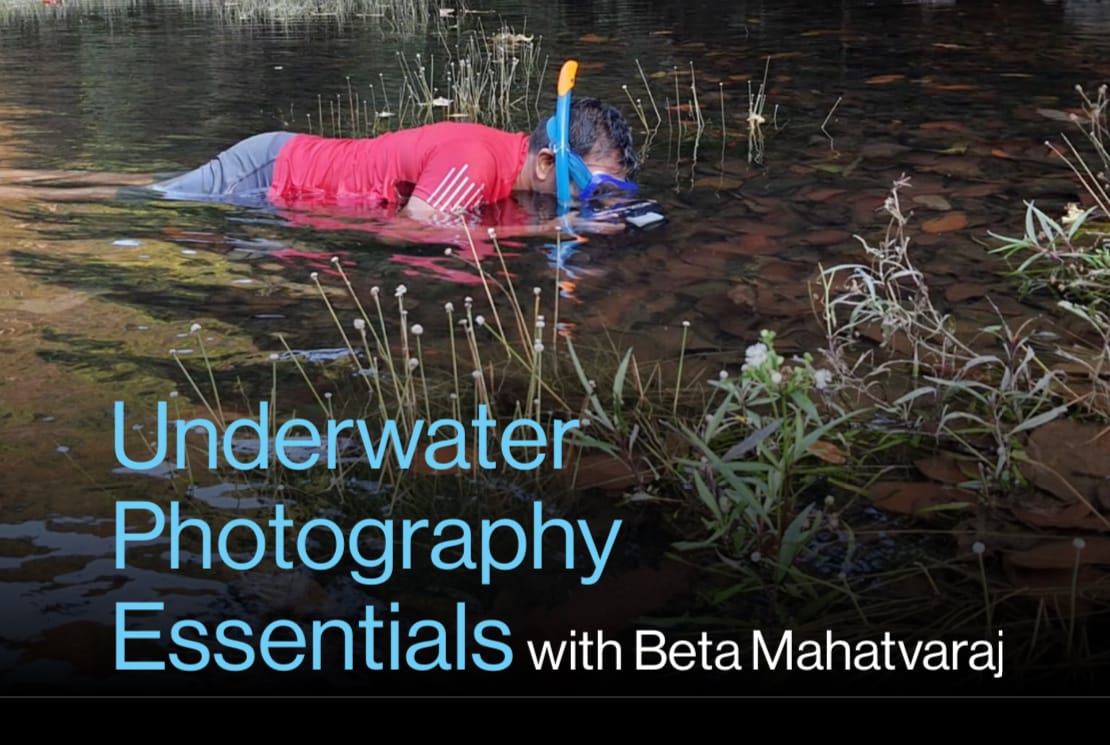
Here's an excerpt from Beta Mahatvaraj's article on "Underwater Photography Essentials" in the March issue of The Weekend Aquarist Magazine.
Underwater Photography Essentials with Beta Mahatvaraj
Capturing the beauty of aquatic life requires more than just an eye for detail; it demands the right equipment, technique, and an understanding of the underwater environment. Renowned aquarist and photographer Beta Mahatvaraj, known for his field explorations and documentation of Indian native fishes, shares his insights on essential gear for underwater photography.
The Right Camera Gear
“My trips have more to do with underwater photography and less about catching fish,” says Beta, highlighting the importance of a reliable camera setup. His primary choice is the Sony a7IV mirrorless camera paired with a Sony 90mm macro lens. This combination offers excellent low-light performance, allowing him to shoot at ISO 3200, which is crucial when photographing in murky or shaded aquatic environments.

He uses a Raynox DCR-250 Super Macro, a clip-on magnifier that enhances details of small fish and aquatic organisms for extreme close-up shots.
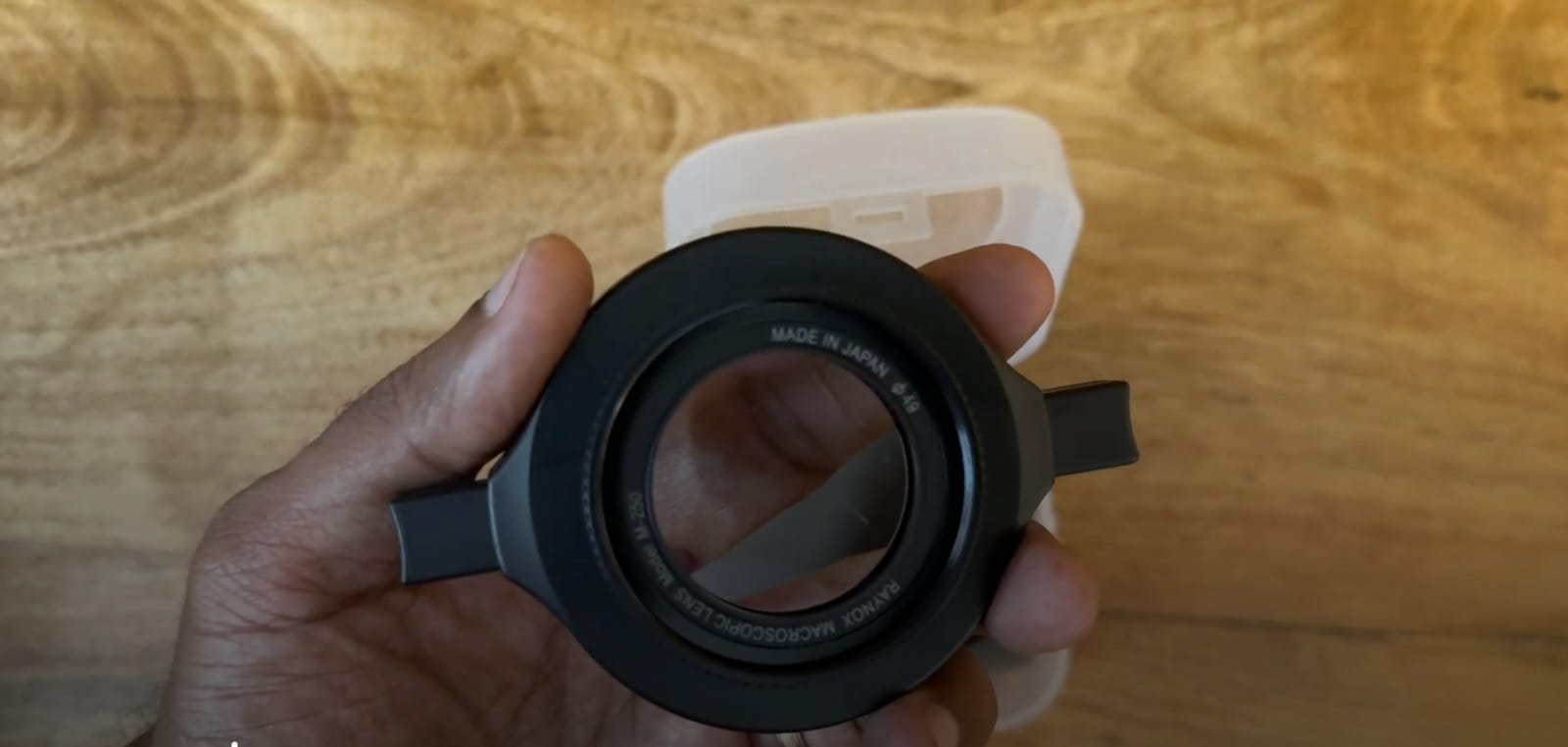
Lighting and Flash Equipment
Proper lighting is critical in underwater photography. Beta employs a Godox X2T transmitter and a Godox V860 II flash, diffused using a Godox ML-CS1625 diffuser, to achieve natural-looking illumination in photo tanks. Underwater, he uses a Sea Life Sea Dragon flash, triggered via a Sea Frogs flash trigger and fibre optic cable.

“When shooting underwater, lighting conditions can be unpredictable, so I also carry Neewer underwater video lights,” he explains, ensuring that video footage remains well-lit even in low-visibility conditions.
Underwater Housing and Protection
Beta relies on Sea Frogs Salted Line camera housings to submerge his cameras, which are known for their affordability and reliability. “I haven’t tried them in saltwater, but for freshwater, I haven’t faced any issues,” he notes. However, he does mention one downside: positive buoyancy, which can make manoeuvring in fast-flowing waters challenging.
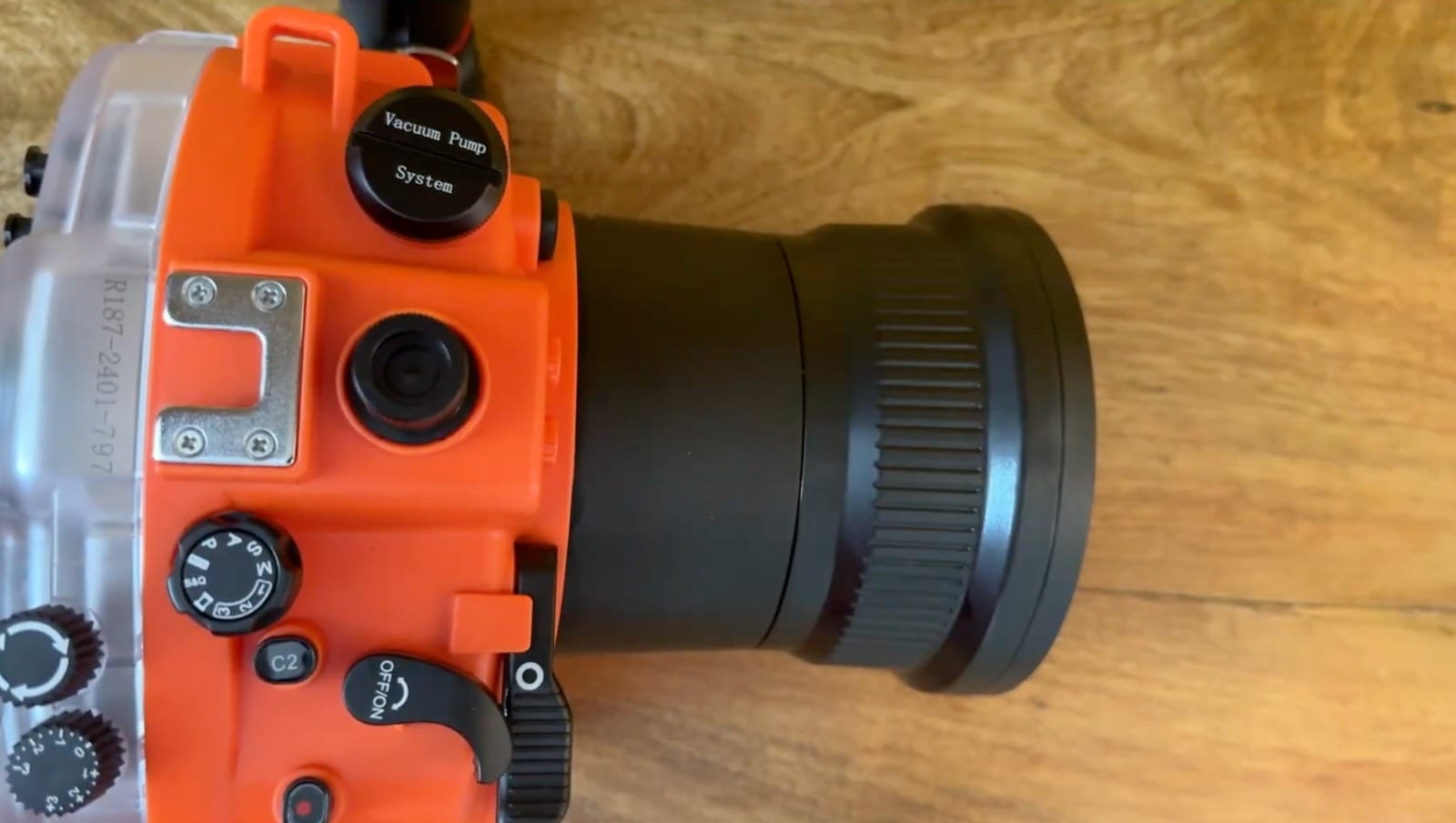
Many underwater photographers also face fogging. Beta uses anti-fog sheets or capsules inside the housing to counter this and carries Zeiss anti-fog wipes for regular cleaning.
Read the complete article in the March issue of 'The Weekend Aquarist' Magazine. If you haven't subscribed yet, grab the 'Best of Both Worlds' offer by subscribing to the print edition and also get access to the digital edition.
Join Our Live Workshop on Underwater Photography!
For those interested in mastering the art of underwater photography, The Weekend Aquarist is excited to announce its first-ever Underwater Photography Workshop with Beta Mahatvaraj. This exclusive session will feature an in-person workshop in Chennai conducted by Beta, with virtual participation available for enthusiasts across the globe. The date and schedule will be announced on our Instagram and Facebook pages.
Interested participants can scan the QR code below to pre-register and secure their spot in this landmark event!

Keeping Calvus (Altolamprologus calvus) by Suneal Mendonca
Excerpts from the initially featured article in the March edition of 'The Weekend Aquarist' Magazine.
The Calvus Cichlid (Altolamprologus calvus) is a fascinating species endemic to the southwestern part of Lake Tanganyika. It thrives in a shallow, rocky habitat. These laterally compressed fish glide effortlessly between cracks and crevices in search of shrimp, other small crustaceans, and fish fry.
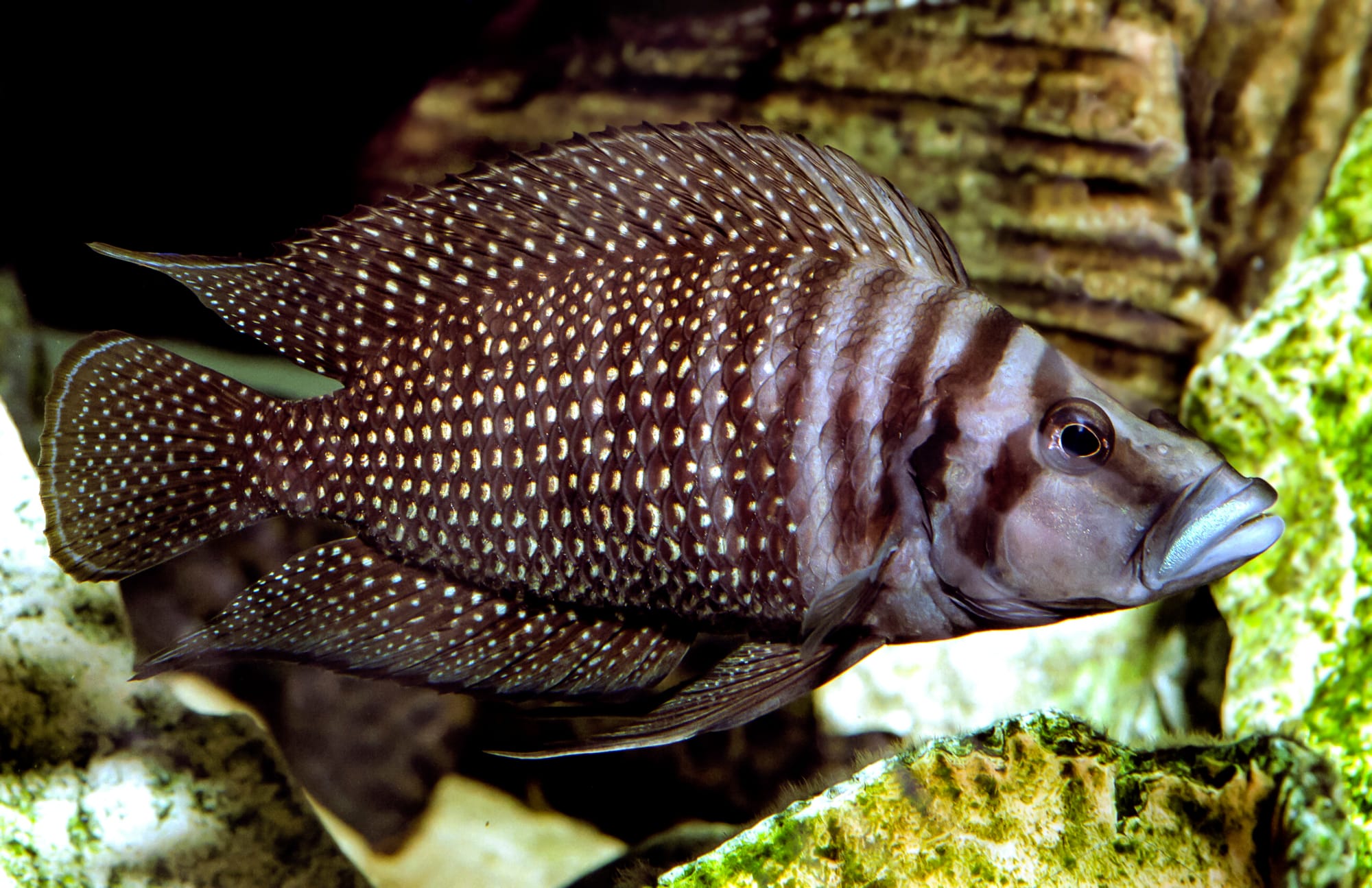
Aquarium Setup
To properly house Calvus Cichlids, I recommend a minimum tank size of 5 feet in length. The aquarium should feature:
- Strong filtration for maintaining water quality
- Good water movement and oxygenation
- A hard and alkaline substrate, such as coral sand or aragonite
- Rocks are arranged to form caves and outcrops, providing ample visual barriers
Despite their slightly menacing appearance, Calvus Cichlids exhibit only mild aggression toward one another in home aquariums. Providing broken lines of sight through the decor helps to minimize conflicts.
I have successfully kept them in species-only tanks and Tanganyikan community setups with fish of similar size and temperament. However, due to their predatory nature and capacious mouths, they should not be housed with small fish like shell dwellers.
Identification & Behavior
Males and females are distinguishable by their size and fin shapes:
- Males are more prominent with longer, flowing anal and dorsal fins.
- Females are smaller and rounder, especially when preparing to spawn.
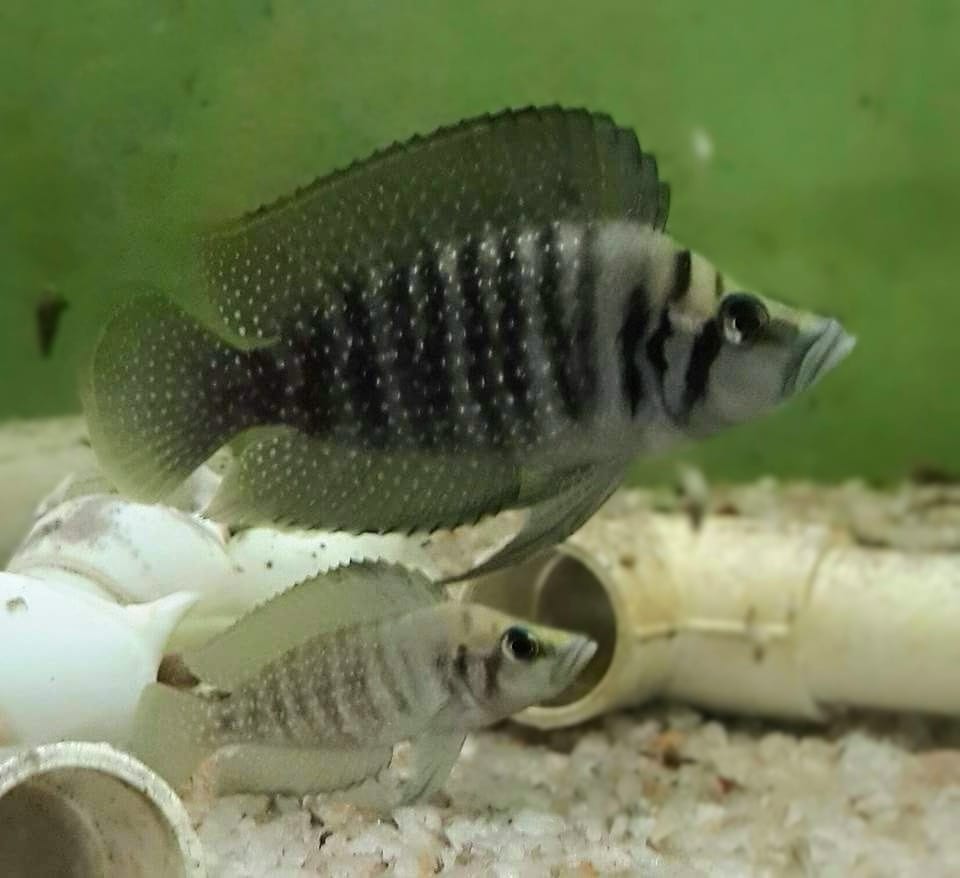
If a breeding pair forms within a group, they can become more territorial. At this stage, I have found that moving them to a separate breeding tank is the best approach to avoid aggression.
Calvus Cichlids are intolerant of poor water conditions, so I frequent small water changes to maintain their health.
Variants & Comparisons
Several geographic colour variations of Altolamprologus calvus exist, including:
- Black Variants: 'Black Samba,' 'Black Pectoral,' 'Black Zaire,' 'Black Kapampa'
- Other Variants: 'Chaitika,' 'Chisanse,' 'Kabemba,' 'Yellow'
Calvus and Altolamprologus compressiceps are endemic to Lake Tanganyika, but there are key differences. Calvus has a more pointed and slender head, an elongated body, and a timid nature, while Compressiceps has a broader head, a stockier build, and is more commonly seen in the hobby.
Breeding Calvus Cichlids
I have bred these fish successfully in caves, mimicking rock crevices. My customized cave setup provided the right conditions for them to spawn. They were very private and secretive, requiring a secluded environment with minimal external disturbance.
Spawning Process
- The female selects a cave, flowerpot, or large shell with an entrance she can fit through.
- She lays eggs inside the cave, while the male fertilizes them externally by releasing sperm/milt at the entrance.
- Both parents fan the water to ensure fertilization, with the female guarding the eggs and the male patrolling the surrounding territory.
- Eggs hatch within 48 hours (temperature-dependent), and fry becomes free-swimming in 7-10 days.
- Fry should be fed baby brine shrimp (Artemia nauplii).
I have observed that once the fry become free-swimming, removing the male is best, as he may prey on them. Initially, I couldn’t see anything outside the cave, but on closer inspection, I noticed tiny dots moving on the substrate. They grow slowly, so I carefully monitored them and separated them by size into a growing tank to prevent larger fry from outcompeting the smaller ones.
Unless the tank is enormous, two males will usually result in one dominating the other. In my experience, Calvus are pretty timid compared to other African cichlids.
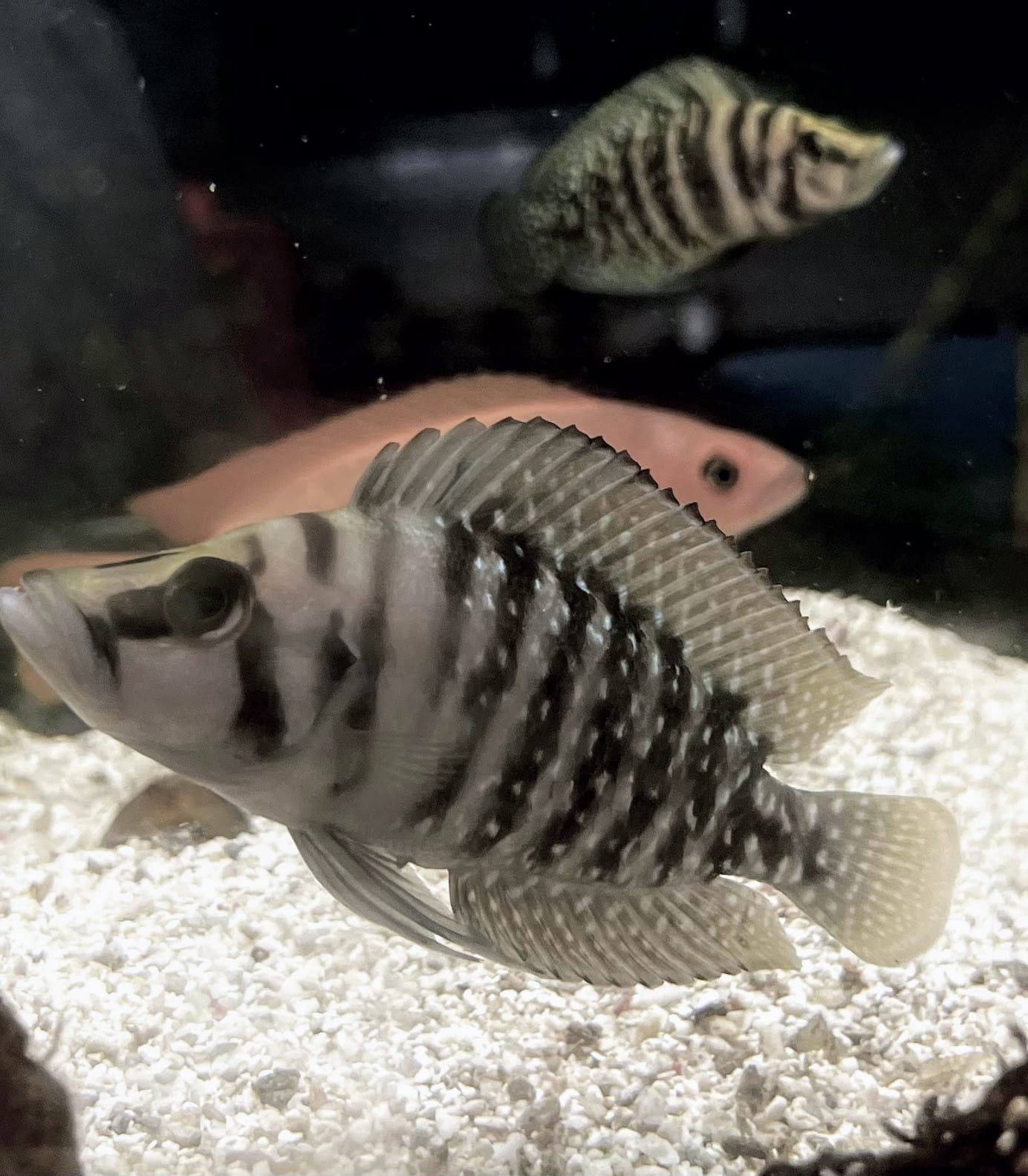
Tankmates for Calvus Cichlids
Calvus Cichlids thrive in species-only or Tanganyikan community tanks. I have successfully kept them with the following:
- Other Lake Tanganyika Cichlids:
- Julidochromis species (Julidochromis regani)
- Cyprichromis species (Cyprichromis leptosoma)
- Neolamprologus species (Neolamprologus multifasciatus)
Dither Fish
I have noticed that Calvus do best with dither fish, which helps reduce their shyness. Recommended options include:
- Cyprichromis species (to stay within an African setup)
- Congo Tetras
- Other fast-swimming schooling fish
Species to Avoid
- Aggressive Cichlids, such as Mbuna or Tropheus, due to their territorial nature and different dietary needs
- Large Predatory Fish, which may prey on smaller Calvus juveniles
Lifespan & Final Thoughts
With proper care and ideal tank conditions, Altolamprologus calvus can live for over 10 years, making them a rewarding, long-term addition to an aquarium.
Keeping Calvus is a lesson in patience. They grow slowly, are shy, and require pristine water conditions. But watching them glide through the rockwork with their unique body shape makes it all worth it.
Did you enjoy reading this article by Suneal Mendonca?
Follow Suneal's articles as he shares his experience keeping and breeding several tanganiyakan fish species exclusively on 'The Weekend Aquarist' Magazine.
If you haven't subscribed yet, grab the 'Best of Both Worlds' offer by subscribing to the print edition and also get access to the digital edition.
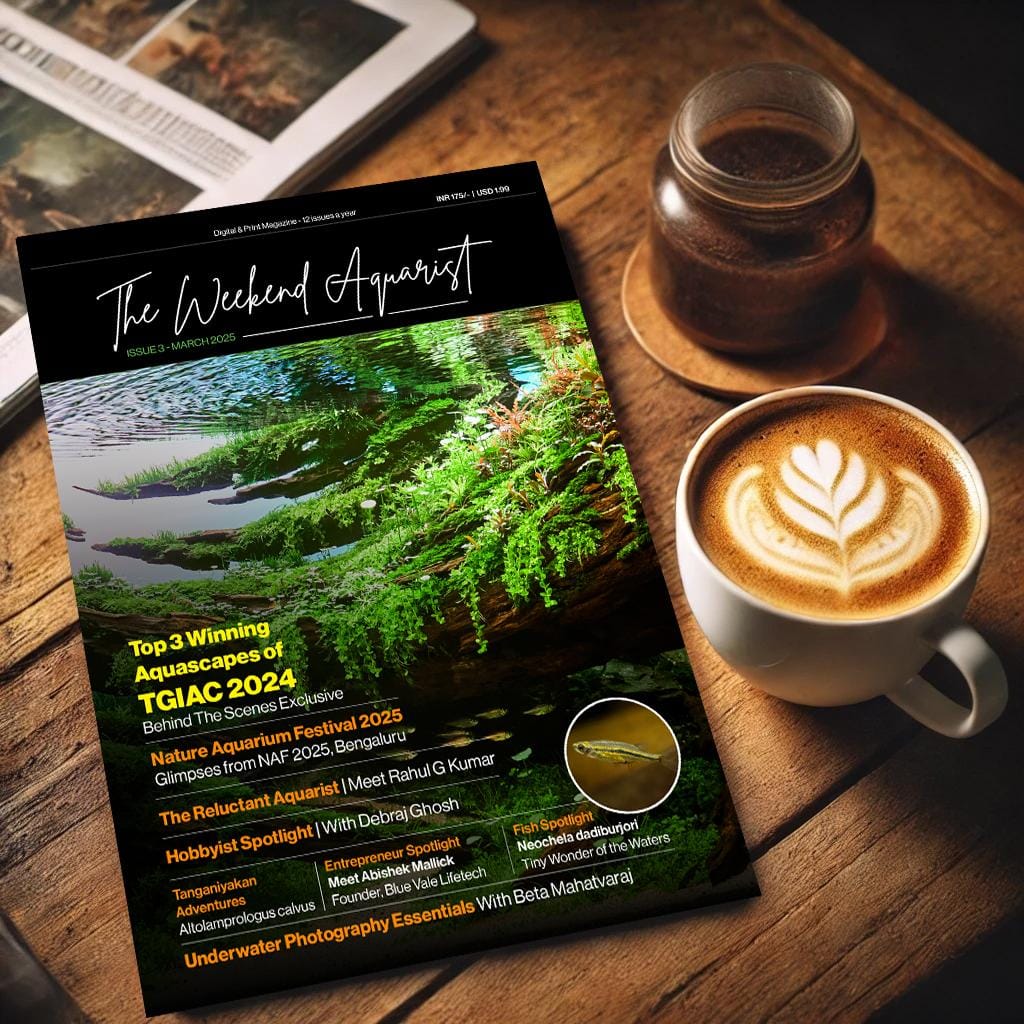
Best of Both Worlds!
The Weekend Aquarist is now available in both Print & Digital formats! Whether you love flipping through pages with a coffee in hand or prefer reading on the go, we’ve got you covered.
🔹 Exclusive Features: In-depth articles on aquascaping, rare Indian native species, expert interviews & more!
🔹 Stunning Photography: High-quality visuals capturing the beauty of the underwater world.
🔹 Industry Insights: Stay ahead with the latest trends, trade news, and expert advice.
💡 Want to try before you subscribe? Click the link below to refer a friend, and both of you will get complimentary access to the first edition!
Get the latest updates on The Weekend Aquarist Instagram handle
